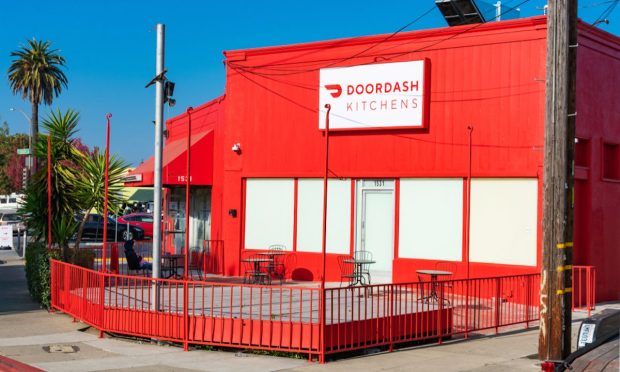Virtual Kitchens Put Restaurants in Control of Menus, Digital Presence

While ghost kitchens were a no-brainer during quarantine, the return of on-premise dining has challenged virtual kitchens to rethink their model. Restaurants are no longer satisfied with remote, difficult-to-reach kitchens in warehouses far from consumers’ homes, and they can no longer get their needs met by one-size-fits-all solutions that treat all brands the same.
“Restaurants often have this misplaced reputation to be slow adopters of technology, and we’ve seen just the opposite — the restaurant partners we … work with are incredibly innovative and receptive to new technologies, platforms and ideas,” Ken Chong, co-founder and CEO at restaurant solutions provider All Day Kitchens and former product manager at Uber, told PYMNTS in an interview. “So, we’ve just seen a rush of excitement in terms of … really pushing the boundaries of what they can do and how they think about serving their customers digitally.”
Earlier in the fall, All Day Kitchens announced a $65 million Series C fundraise; in the past year, the company’s restaurant partners have increased fourfold, and locations have doubled.
Certainly, digital ordering has grown dramatically more popular in recent years. Research from PYMNTS’ study “The Bring-It-to-Me Economy: How Online Marketplaces And Aggregators Drive Omnichannel Commerce,” created in collaboration with Carat from Fiserv — which featured a census-balanced survey of more than 5,200 U.S. consumers about how their shopping habits have changed since the start of the pandemic — 58% of consumers are ordering restaurant food online more often than prior to March 2020. Plus, that figure jumps to roughly two-thirds for younger consumers, including Gen Zers, millennials and bridge millennials.
Read more: Bring-It-to-Me Economy Ascends as Consumers Embrace Home-Centric Lifestyles
One Size Does Not Fit All
As restaurants have grown increasingly digitally savvy, their needs have been growing more specific.
“That’s one of the things that we hear about a lot from our restaurant partners — we want to be in control of both our digital presence and our menus,” Chong said. “So, we give them the flexibility in every way we can whenever we make a design decision.”
In fact, even the major restaurant technology companies — the ones that built their following on offering bundled solutions to meet the needs of as many restaurants as possible — have been noting this demand for flexibility, allowing restaurants to choose which products are most relevant to them. For instance, earlier this month, DoorDash and Grubhub both announced features that make it easier for restaurants to fulfill orders using a combination of their own drivers and delivery service drivers.
You may also like: DoorDash, Grubhub Race to Offer Restaurants the Most Flexible Fulfillment
Chong’s remarks echo those of Steve Simoni, CEO of contactless ordering and payment technology provider Bbot. In an interview with PYMNTS, he shared his expectation that as restaurants become more widely available across digital spaces, solution providers will continue to offer more of their services piecemeal, making them better able to fit within restaurants’ evolving digital needs.
“That choose-your-own-adventure is the trend right now, and that’s why it’s more important than ever for system integrators to get it right,” he said.
The New Ghost Kitchen
In its early iterations, the ghost kitchen model promised low-cost real estate, situating the physical site far from dense, urban centers. Now, given the driver shortage and the fact that many foods do not hold up well when transported long distances, these satellite locations pose major limitations for many restaurants.
“Restaurants have told us that they’re really not looking for an alternative landlord, or they don’t want to be hidden inside a warehouse in a light industrial area,” Chong said. “They want to be closer to where customers live and work.”
Of course, not all industry insiders are so convinced of ghost kitchens’ long-term viability, even with these changes. Steve Fredette, president and co-founder of restaurant software company Toast, noted in an interview with PYMNTS that it may be too soon to say what the future holds for these delivery-only locations. “You could look at meal kits as an example, where a lot of companies had a quick rise and success and then faltered. So with ghost kitchens or cloud kitchens, the question is how important they are going to be in the long term.”
See also: Toast President Says Ghost Kitchens No Substitute for On-Premises Dining Experience
Restaurants’ Digital Future
Whether or not the ghost kitchen model will make it in the long run, digital ordering is clearly here to stay. Research from PYMNTS’ 2021 Restaurant Readiness Index, created in collaboration with Paytronix, finds that 16% of restaurants’ sales are now generated through third-party aggregators, while 10% come through restaurants’ own online-delivery ordering platforms. Plus, 48% of consumers and 53% of restaurant managers rank the ability to order online as being important to restaurants’ future success.
More details: QSRs’ Lagging Loyalty-Reward Investment Hurts Innovation and Sales
Furthermore, consumers ordering online do so more frequently than those ordering through more traditional channels. Research from the July/August edition of PYMNTS’ Delivering on Restaurant Rewards report, also created in collaboration with Paytronix — which surveyed more than 2,000 U.S. adults about their restaurant ordering behaviors and loyalty program usage — found that 30% of restaurant customers who order from third-party aggregators do so at least twice a week, while only about 15-20% of customers who dine on-premise do so as frequently.
Related news: Two-Thirds of Consumers Find Restaurant Rewards Impersonal
“We’ve grown our revenues around 18 times since pre-COVID,” said Chong. “As we’re so early in this consumer habit [digital ordering] really taking off, we’ve noticed that it continues to grow and stay with the consumers and restaurant partners.”
